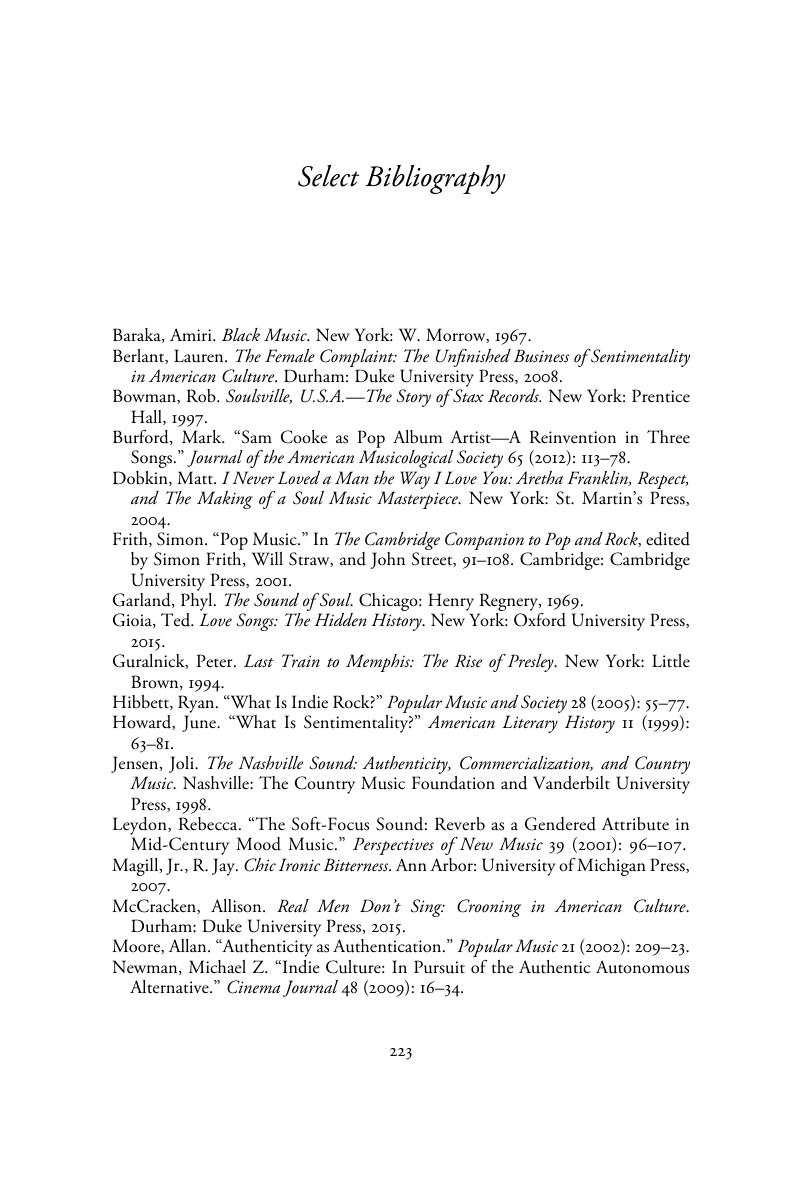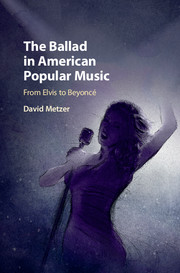Book contents
- The Ballad in American Popular Music
- The Ballad in American Popular Music
- Copyright page
- Dedication
- Contents
- Acknowledgments
- Introduction
- Chapter 1 The 1950s
- Interlude I
- Chapter 2 The Soul Ballad
- Interlude II
- Chapter 3 The Power Ballad
- Interlude III
- Interlude IV
- Chapter 4 Indie Ballads
- Interlude V
- Conclusion
- Select Bibliography
- Index
- References
Select Bibliography
Published online by Cambridge University Press: 15 September 2017
- The Ballad in American Popular Music
- The Ballad in American Popular Music
- Copyright page
- Dedication
- Contents
- Acknowledgments
- Introduction
- Chapter 1 The 1950s
- Interlude I
- Chapter 2 The Soul Ballad
- Interlude II
- Chapter 3 The Power Ballad
- Interlude III
- Interlude IV
- Chapter 4 Indie Ballads
- Interlude V
- Conclusion
- Select Bibliography
- Index
- References
Summary

- Type
- Chapter
- Information
- The Ballad in American Popular MusicFrom Elvis to Beyoncé, pp. 223 - 224Publisher: Cambridge University PressPrint publication year: 2017



